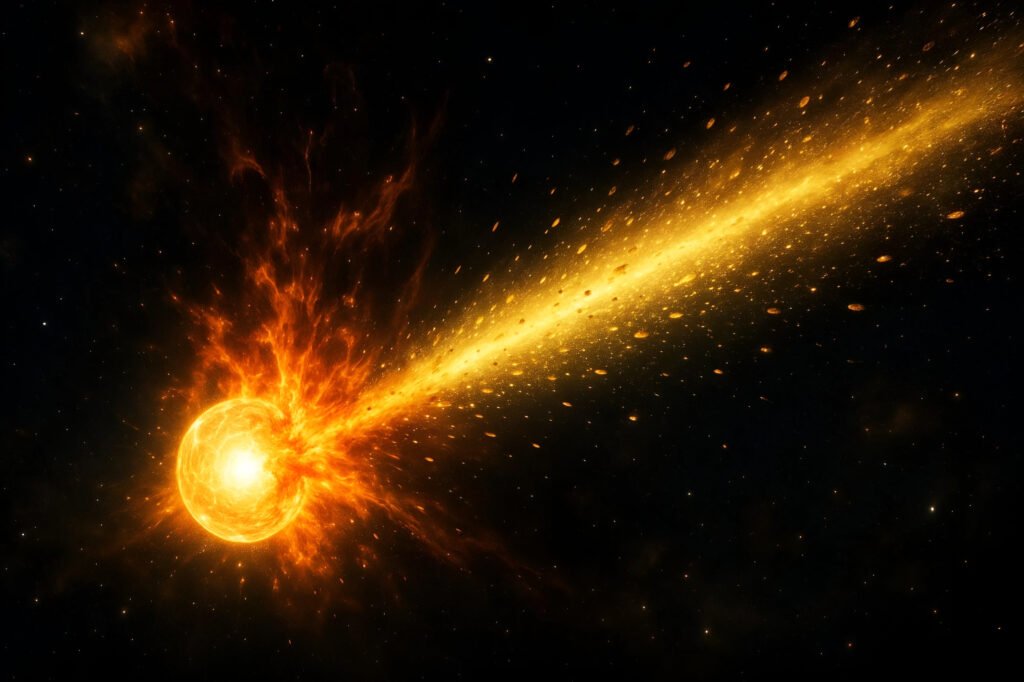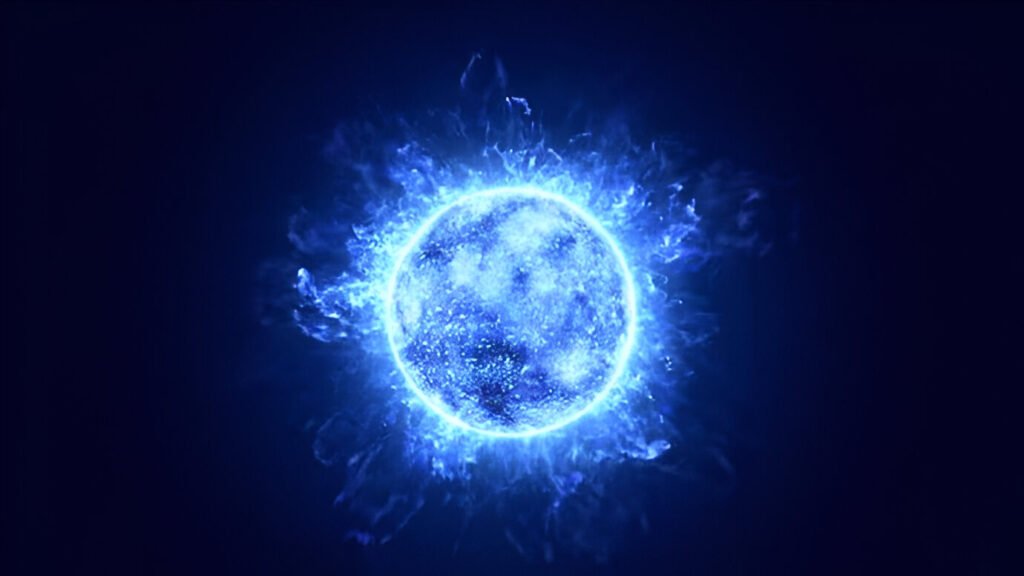
Scientists have long been intrigued by a cosmic enigma: where did the universe’s heaviest elements, gold, platinum, and uranium, originate? Although we know that lighter elements like hydrogen and helium appeared soon after the Big Bang, and others were created within stars via fusion, it was unclear where the first heavy elements originated. Now, a fresh look at data from nearly 20 years ago is shedding light on a new possibility: that a rare kind of stellar object, known as a magnetar, might have been responsible for seeding the cosmos with these precious materials.
A new study, by Anirudh Patel, a Ph.D. candidate at Columbia University, and published in The Astrophysical Journal Letters, proposes the potential that magnetars—strongly magnetized neutron stars formed via supernova explosions—have had a far greater influence on the elemental content of our universe than previously assumed.
What are magnetars?
Magnetars are among the most extreme objects in the universe. They are the leftovers of huge stars that went out in supernova explosions, collapsing into extremely dense neutron stars. What distinguishes magnetars, however, are their incredibly strong magnetic fields—trillions of times more powerful than on Earth. Those fields can generate huge internal stress, sometimes causing what is called “starquakes,” which crack up the star’s crust and emit bursts of high-energy radiation called magnetar flares.
These flares are so powerful they can perturb Earth’s upper atmosphere, even if the magnetars are thousands of light-years away. But until recently, their contribution to the creation of heavy elements hadn’t been thoroughly investigated.
The Riddle of Heavy Elements
NASA states that the young universe was filled only with hydrogen, helium, and small quantities of lithium. Heavy elements must have formed later, usually within stars or through catastrophic cosmic events. In 2017, scientists confirmed that when two neutron stars collide, they can generate massive quantities of heavy elements via a process called the r-process—short for rapid neutron capture. However, such mergers are rare and take time to occur, making them unlikely sources for the earliest heavy elements.
This gap in understanding left researchers wondering: could there be another, more frequent cosmic event that happened earlier in the universe’s history, capable of forging the first gold and uranium?

Revisiting Old Data, Discovering New Clues
Patel and his colleagues decided to search for answers in a somewhat unexpected place: archived space telescope data collected nearly two decades ago. Initially, the team looked for visible or ultraviolet light that might indicate elemental formation. But co-author Eric Burns from Louisiana State University suggested they instead examine gamma rays—high-energy light with the power to penetrate through dense matter and leave behind a unique signature.
Their investigation led them to data from the INTEGRAL satellite, operated by the European Space Agency, which had observed a major magnetar flare in 2004. Remarkably, the gamma-ray signals recorded during this event matched the predictions of Patel’s theoretical models, pointing toward the formation of heavy elements during the flare itself.
To validate this finding, the team cross-checked their results with independent observations from NASA’s RHESSI and Wind satellites. Both had captured the same flare, and their data confirmed the presence of the same gamma-ray signature—strengthening the case that magnetars may indeed be powerful producers of heavy elements.
A Cosmic Breakthrough
This discovery marks a new chapter in astrophysics, offering a compelling explanation for how heavy elements may have formed early in the universe—long before neutron star collisions could contribute meaningfully. If magnetar flares were frequent in the young universe, they could be responsible for up to 10% of the heavy elements in our galaxy, according to the research.
Looking ahead, NASA’s upcoming COSI (Compton Spectrometer and Imager) mission, scheduled for launch in 2027, could provide further insights. The wide-field gamma-ray telescope will be capable of capturing gamma-ray bursts from space in more detail, potentially confirming if elements like gold and platinum are truly born from these violent stellar events.
In the meantime, researchers are combing through other old telescope archives, searching for similar signals that could help trace the elemental origins of our universe.
Stardust in Our Pockets
Perhaps the most awe-inspiring aspect of this discovery is its human connection. As Patel reflects, it’s fascinating to think that the gold in a wedding ring or the platinum in a smartphone may have been formed in a cataclysmic explosion billions of years ago—one that shattered the crust of a distant, dying star and scattered its elements across space.
In a universe filled with wonder, it turns out some of its most treasured elements come from its most violent events. Magnetars, once little understood, may now be recognized not just as cosmic anomalies but as ancient goldsmiths of the universe.









